Jean-Baptiste Charcot - Francais
French Antarctic Expedition
1903 - 1905
The Crew Alphabetically
Besnard- Assistant boatswain
Charcot,
Jean-Baptiste - Commander of the and leader
of the expedition, medical officer and bacteriologist.
Chollet, E. - Skipper of the Francais
Dayne, P - Alpine guide
Gourdon, Ernest - Geology and glaciology -
joined at Buenos Aires
Goudier-
Chief mechanic
Guegen, F. - Stoker
Guegen, J. - Sailor
Herveou,
F. - Matelot
Jabet, J. - Boatswain
Libois- Stoker, carpenter, engineer
Matha, A. Lt. - second in command of
the expedition (naval officer) - astronomy, gravitation,
hydrography.
Paumelle, Robert - Mess steward
Pleneau, Paul - Photographer, commissary
Poste, L. - Second engineer
Rallier du Baty, Raymond - Cartographer
Rey, J. Sub Lt. - Physicist
Rolland, F. - Matelot
Rozo,
M. - Cook
Turquet, J. - Zoology
and botany- joined at Buenos Aires
Maignan
- crewman- killed on leaving
Le Havre
Bonnier, J: de Gerlache,
Adrien:
Perez - left the
ship at Madeira.
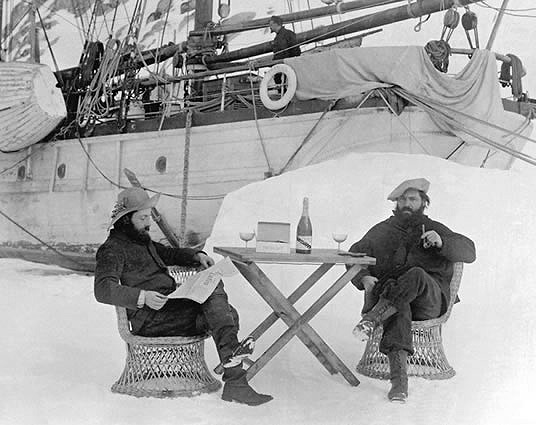
Ernest Gourdon (l) geologist and glaciologist, and Paul Pleneau (r) photographer, enjoy a glass of Mumm Champagne in Antarctica on Bastille Day 1904. Composite picture produced by Mumm Champagne as a publicity shot, the bottle was given a more modern label.
In response to the upsurge of interest and exploration of polar regions in the 1890's, Jean-Baptiste Charcot decided he would represent France in such endeavours. His fortune was to be invested in a voyage to the Arctic in his own ship to be built for the purpose. A well-known shipwright Pere Gautier of St.Malo was enlisted to build a three masted schooner, to be known as the Francais. The ship was relatively small at 250 tons, but was exceptionally well built of fine materials. On the advice of de Gerlache, whom Charcot consulted, the ship was strengthened at the waterline with transverse beams, the bow was reinforced with iron. The Achilles heel however was a poor quality engine that at 125 hp underpowered the ship.
Though the Francais was intended for the Arctic, in 1903 news arrived in Europe that the Swedish explorer Otto Nordenskjod and his ship the "Antarctic" were missing. Charcot decided to head south to Antarctica instead and search for the missing explorer, he also realised that there was a better chance of fame and making new discoveries in the virtually unknown south than the more explored north. He wrote to his friend and supporter Paul Pleneau, the director of a steamship company asking him to go along - the reply: "Where you like. When you like. For as long as you like".
Thus was the French Antarctic Expedition born. The cost of the Francais had left Charcot with little money and so he set about seeking the support of the French President, Emile Loubet and also from the institutions: Academie des Sciences, Societe de Geographie and the Museum of Natural History. The French newspaper Le Matin published the news of the expedition and brought in 150,000 francs of the 450,000 francs (approx. £20,000) required, mainly in small donations from many hundreds of individuals. Funding was still tight however and only two crew members, naval officers were on normal pay, everyone else was a volunteer. Funding was rather low compared to the contemporary German (Drygalski - Gauss), British (Scott - Discovery) and Scottish (Bruce - Scotia) Antarctic expeditions, and corners were necessarily cut in a number of places. The Belgian explorer, Adrien de Gerlache was also to accompany the expedition.
The Francais left from Le Havre on August the 15th 1903. A freak accident occurred almost immediately when the thick stern rope slipped as the ship pitched in stormy conditions, striking a sailor named Maignan and killing him instantly. Charcot turned back and took the body of the stricken Maignan back to his widow in her Breton village. The ship eventually left two weeks later on August the 27th.
She sailed initially to Madeira where Adrien de Gerlache left the expedition, he had recently become engaged and became inconsolable over the separation from his fiancee. Another two members also left, Perez and the scientist J. Bonnier though for reasons that are not known. Charcot felt that his expedition was starting to disintegrate long before he had even reached Antarctic waters. He consulted the other members of the expedition and assembled the crew whereby they all declared their intention to carry on, Charcot was greatly relieved and appreciative.
The ship continued to Brazil and then onto Buenos Aires arriving on the 16th of November, it was here that Charcot learned that Nordenskjod had been rescued after his ship, the Antarctic had been crushed in the ice. Nordenskjold and his fellow explorers were duly invited aboard the Francais whereupon they gave the French expedition five Greenland huskies.
Two new scientists from France J. Turquet and Ernest Gourdon joined the ship at Buenos Aires. The party left their last South American port of call at Ushuaia on the 24th of January 1904 for Antarctica. They were headed for the west side of the Antarctic Peninsula as far as Adelaide and Alexander Islands to build upon the discoveries of de Gerlache and the Belgica.
On the 5th of February alongside Palmer land the engine began to give trouble, the Francais limped through the icebergs and pack ice and eventually laid up in a bay where repairs were made to the boiler and pipes. On the 19th of February, they discovered a place at Wiencke Island where Charcot named an inlet Port Lockroy. It was a natural harbour in a magnificent setting and rich in wildlife.
They proceeded to go further south through the Lemaire Channel to the Biscoe Islands, though thick sea ice and more engine problems meant they retreated north again. They had reached 65°5'S, 64°W, as far south as de Gerlache in the Belgica and a degree farther south than Nordenskjod on the Antarctic.

Rock cairn at Port
Charcot, Booth Island, with wooden pillar and plaque inscribed
with the names of the first French expedition led by Jean-Baptiste
E. A. Charcot which wintered here in 1904 aboard Le Francais.
Winter quarters were established in a large bay named Port Charcot (named by Charcot for his father) on the north coast of what is now called Booth Island (then named Wandel Island). The ship was moored and a number of structures for accommodation and scientific instruments were erected as the autumn set in.
It was important that the men had sufficient to occupy themselves through the winter, so scientific observations and programmes were begun in earnest. The men slept on board the ship and used the shore station for work and for potential emergency shelter. It was important to have some degree of privacy and so each bunk had a sliding door. There was a daily ration of wine and rum. For entertainment, there were old newspapers and the stories provided a rich source of material for discussion. There was chess, lectures and various celebrations as came around to add some variety to the monotony of winter, but as any other Antarctic winter before or since, the nights could become very long and lack of variety or the unexpected could become quite tedious.
On the 30th of May, Charcot arranged a trip, at 10:30 am, all personnel who could be spared set off to the nearby Hovgaard Island on an Antarctic picnic. A few men got wet inadvertently breaking through thin ice to the sea beneath, but as Charcot wrote:
"We had to break up the meat and butter with axes...An hour and a half later I was able to produce a fine Polar meal, though we had to eat very quickly, dancing about all the time to keep our feet warm".
As winter set in the wardroom stove sometimes didn't work properly and the ships interior became uncomfortably cold, the men had to wrap themselves in layers of clothing as the temperature dropped to -38°C. The Francais froze into the water that was surrounding it.
Lieutenant Matha became ill with a heart condition - myocarditis. Charcot as the expedition doctor (his first occupation before he adopted science and exploration) applied a treatment recommended by de Gerlache and by September the patient was back on his feet and performing his duties. Four of the crew including Rallier du Baty became lost in the fog on a trip out from the ship, a search party found the men suffering from frostbite and exposure.
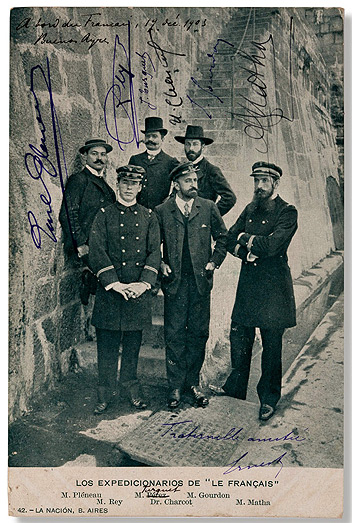
Some of the crew of the Francais, picture taken in Buenos Aires. back l-r: Pleneau, Turquet, Gourdon, front l-r: Rey, Charcot, Matha
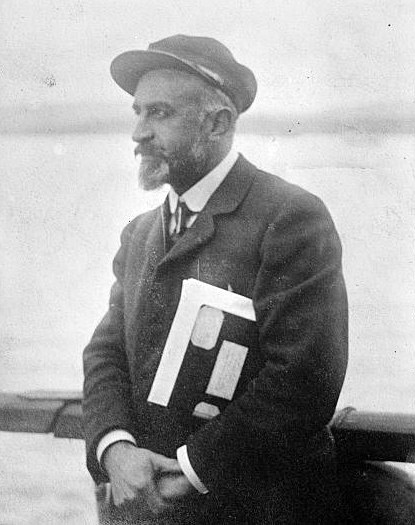
Charcot
Charcot, Pleneau, Gourdon and two crewmen left the ship on the 24th of November in the whaleboat (a particular design of open boat), they had camping equipment, 20 days' rations, scientific instruments and a collapsible sledge, the intention being to explore the Graham Land coast. The first night was spent about 10 miles away on Petermann Island. Unfortunately the ice was neither sufficiently broken up to allow for boat travel or solid enough for for foot travel. Instead they found themselves having to pull the heavily laden boat through the ice often in freezing water up to their knees, for 10 to 18 hours per day. Suffering from the cold and snow-blindness despite wearing dark glasses they eventually arrived at Cape Tuxen on the Graham Land coast, the first confirmed landing on the west coast of the Antarctic Peninsula.
They climbed a 2,900-foot peak at Cape Tuxen before returning to the whaler and heading south. They returned to the Francais after an exhausting journey of eleven days. In the meantime Matha had prepared the ship which left the winter quarters after wind blew out the ice on the 25th of December.
They proceeded southwest skirting the Biscoe Islands and passing Adelaide Island, on January the 13th 1905 they caught sight of Alexander Island 60 miles to the south, but were unable to advance any further south and so turned northwards. Two days later the ship struck a rock near Adelaide Island about a mile from the shore. The bow reared up near to the vertical, the masts swayed as if they would fall, but then the ship slid back, though water was starting to flood in. To compound problems, the engine was working poorly and the pumps had to be operated by hand, the engineer, Libois, lowered himself into the water in the bow and spent several hours working on the damaged hull.
The ship headed back for Port Lockroy with all plans of further exploration now abandoned. Frozen fingers in shifts operated the pumps for 45 minutes of each hour and Port Lockroy was reached on the 29th of January, repairs took ten days. By this time the crew were exhausted, Charcot himself hadn't changed his clothes for a month.
The Francais limped on northwards and reached the Argentine port of Puerto Madryn in Tierra del Fuego. Pleneau rode 45 miles on horseback to Chubut to wire home. Charcot received three pieces of personal bad new: his wife had decided to divorce him on grounds of desertion, a bother-in-law had died and his sister Jeanne was divorced. They arrived in Buenos Aires on the 15th of March where all the ships in the port "dressed" in their honour.
The extent of the damage to the Francais was assessed in dry-dock, the bronze reinforcement on the stem was destroyed, 22 feet of false keel were gone and planks were loose - she had come close to being a shipwreck. The Argentine Government offered to buy her, for use as a supply ship for the Laurie Island Meteorological station - the offer was too good to refuse.
Charcot, the crew and 75 crates of scientific results departed Buenos Aires on May 5, 1905 aboard the liner Algerie. France had a new hero, Commandant Charcot. More than 600 miles of new coastlines and islands had been surveyed, 18 volumes of scientific reports would be published at government expense.
Charcot knew he was destined to return to Antarctica.
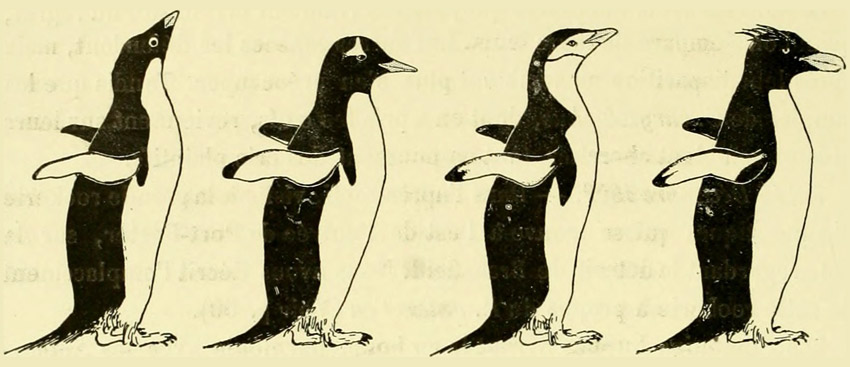
Landmarks named after the Francais
Feature Name:
Francais Cove
Feature Type: bay
Latitude:
65°04'S
Longitude: 064°02'W
Description: Small cove at the W side of
Port Charcot, which indents the N end of Booth Island, in the
Wilhelm Archipelago. Discovered by the FrAE, 1903-05, under
Charcot, and named by him after the ship expedition's winter
operations at Port Charcot in 1904.
Variant Name: Anse du
Francais, Francais Bight
Feature Name:
Francais Glacier
Feature Type: glacier
Latitude: 66°33'S
Longitude:
138°15'E
Description:
Glacier 4 mi wide and 12 mi long, flowing NNE from the continental
ice to the coast close W of Ravin Bay. Delineated from air photos
taken by USN OpHjp, 1946-47. The FrAE under Marret, 1952-53,
sledged W on the sea ice to the ice cliffs close E of the glacier.
Named after the Charcot, 1903-05.
Variant Name: Glacier Endurance
Feature Name:
Francais Glacier Tongue
Feature Type: glacier
Latitude: 66°31'S
Longitude:
138°15'E
Description:
Broad glacier tongue about 3 mi long extending seaward from
Francais Glacier. Charted in 1951 by the FrAE and named by them
for the Francais, expedition ship of the FrAE under Charcot,
1903-05.
Feature Name:
Francais, Mount
Feature Type: summit
Elevation: 2760
Latitude:
64°38;S
Longitude: 063°2'W
Description: Majestic, snow-covered mountain,
2,760 m, which forms the summit of Anvers Island, standing SE
of the center of the island and 6 mi N of Borgen Bay, in the
Palmer Archipelago. First seen by the BelgAE, who explored the
SE coast of the island in 1898. Later sighted by the FrAE, 1903-05,
under Charcot, who named it for the expedition ship Francais.
Variant Name: Monte Teniente Ibanez
 Let
Heroes Speak: Antarctic Explorers, 1772-1922
Let
Heroes Speak: Antarctic Explorers, 1772-1922 A brief synopsis of all major expeditions to Antarctica from Captain Cook to Shackleton.
Picture credits: Booth Island - Liam Quinn from Canada, used under Creatice Commons 2.0 Attrirbution Share Alike Generic license | Port Charcot, Booth Island - BluesyPete, used under Creatice Commons 3.0 Attrirbution Share Alike Unported license

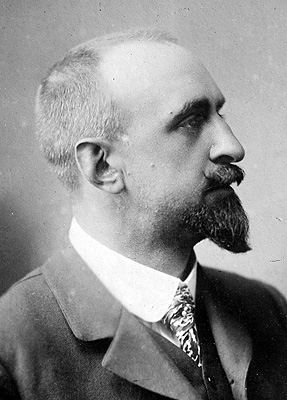
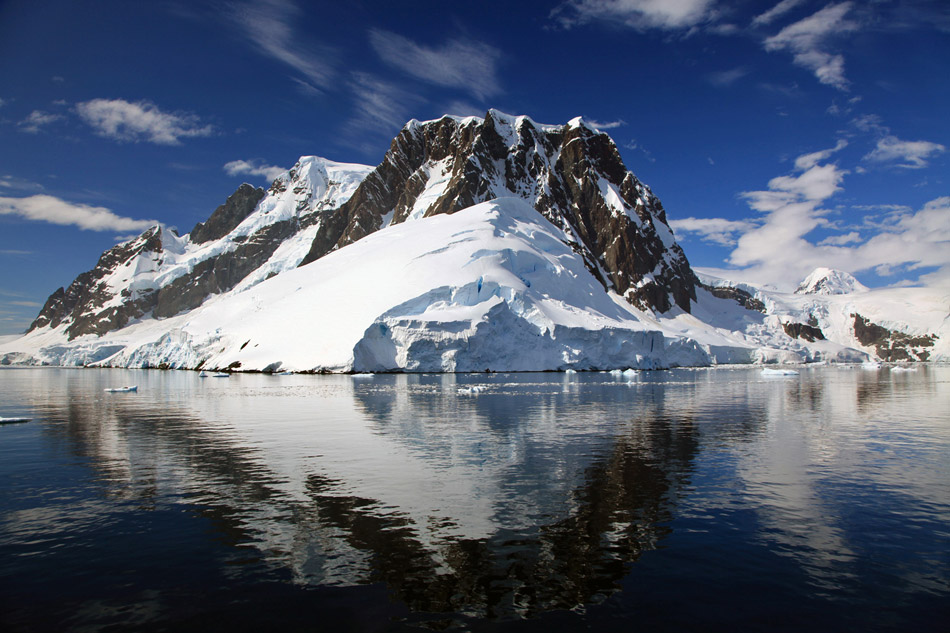
 Towards
the South Pole Aboard the " Francais"
Towards
the South Pole Aboard the " Francais" Charcot
of the Antarctic
Charcot
of the Antarctic